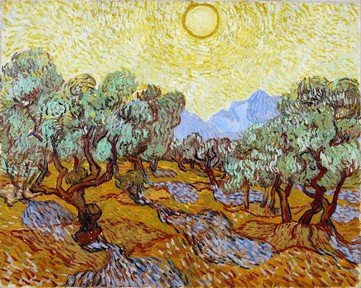Quiz Answer Key and Fun Facts
1. 'The Robbers and the Donkey' is an oil painting dating from around 1870, featuring a donkey flanked by a group of men who are presumably the titular robbers. The painting dates from the end of its French artist's 'Dark Period'. Can you name him?
2. 'Hecate', also known as 'The Night of Enitharmon's Joy', depicts a woman surrounded by bizarre and ghoulish creatures - including a donkey chomping on a thistle leaf. Which artist, perhaps better known as a poet, was responsible for this work of 1795?
3. The 'Caprichos' are a set of 80 prints produced between 1797 and 1798 as a satirical commentary on the state of Spanish society. Prints number 37 to 42 of the set feature anthropomorphised donkeys. Which artist created them?
4. The 1903 painting 'Stable at Cuenca' depicts the dark interior of a rustic stable complete with horses and donkeys. It is a work by which American artist, better known as a portrait painter, who was born in Florence, Italy in 1856?
5. William Shakespeare's play 'A Midsummer Night's Dream' has inspired many works of fine art, including 'Scene from A Midsummer Night's Dream. Titania and Bottom', which shows Bottom with his head transformed into that of a donkey. Which British artist, famous for his depictions of animals, painted this somewhat peculiar scene?
6. 'The Cottage in a Cornfield' depicts a donkey standing by the gated entrance to a thatched cottage, surrounded by ripening yellow cornfields. It was painted by which English landscape artist whose other works include 'The Hay Wain' and 'Flatford Mill'?
7. Many religious paintings feature the humble donkey. 'The Triumph of the Innocents' depicts Mary and the baby Jesus (on donkey back) escaping to Egypt, accompanied by the spirits of the children killed on the orders of King Herod. The artist responsible for this work was which founding member of the Pre-Raphaelite Brotherhood?
8. Dating from around 1861, the 'Potato Planters' includes a donkey incongruously resting in the shade of a tree whilst the human subjects of the picture undertake the hard work of digging and sowing potatoes. Which French artist, renowned for his depictions of farming and agricultural labour, is responsible for this work?
9. Small children riding around on donkeys are a traditional sight of English beach resort towns. However, 'Donkey Ride at La Roche-Guyon' depicts two children riding donkeys in a French field. Which Impressionist artist, who lived from 1830 to 1903, committed this scene to canvas?
10. 'The Edge of the Forest (III)', also known as 'Donkey by the Lane', features a donkey standing by the side of a tree-lined country lane. It was painted in 1885 by which controversial artist who spent the later part of his life in French Polynesia, before dying on the Marquesas Islands in 1903?
Source: Author
Fifiona81
This quiz was reviewed by FunTrivia editor
LadyCaitriona before going online.
Any errors found in FunTrivia content are routinely corrected through our feedback system.

